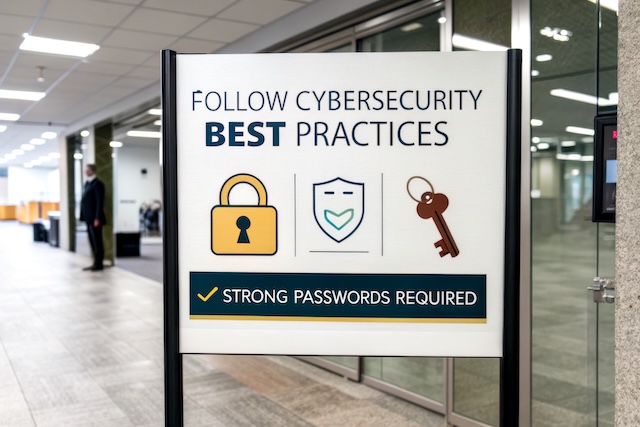As spring semester at SFSU comes to a close, it’s important to stay vigilant against potential information security threats.
Let’s focus on five key actions to protect our digital lives:
1. Use Strong Passwords
Create unique, complex passwords for each account. Doing so makes it more difficult for hackers to access your accounts. Instead of using a simple password like “password123,” create a complex one like “T!m3T0$3cur3!” that includes a mix of uppercase and lowercase letters, numbers, and special characters. The longer the password, the more difficult it is to crack. Tools like password managers can help generate and store these complex passwords securely.
2. Enable Multi-Factor Authentication (MFA)
Add an extra layer of security to your accounts by requiring a second form of verification, such as a code sent to your phone. When logging into your email account, after entering your password, you might be prompted to enter a code sent to your phone or use a fingerprint scan. This additional step ensures that even if someone has your password, they can’t access your account without the second factor. MFA should be set up on all applications that offer it, especially social media platforms. It's a simple but highly effective way to strengthen your account security.
3. Recognize and Report Phishing, Quishing, and Smishing
Be cautious of suspicious emails and messages that ask for personal information or direct you to unfamiliar websites. Report any suspicious activity to the appropriate authorities. For example, you might receive a message that appears to come from your bank, urging you to click a link and enter account details. Before clicking, check for signs of phishing: look at the sender’s email address, hover over links to see the URL, and watch for urgent language or grammatical errors. If it seems suspicious, report it to ITS via abuse@sfsu.edu or use the “Report Phishing” icon in Outlook.
4. Keep Software Updated
Regularly update your devices and applications to protect against vulnerabilities. Doing so helps to keep your information safe from potential threats. Regularly updating your operating system, antivirus software, and applications can protect you from the latest threats. For instance, if your computer prompts you to install a security update, do it as soon as possible to patch vulnerabilities that hackers could exploit.
5. Adjust Your Privacy Settings
Your data is collected every day from multiple sources, including your computer, smartphone, and other internet-connected devices you use—even your wristwatch or car! However, you often have some control over how this data is collected, shared, and sold. Check your privacy and security settings for every app, account, or device you use. These should be easy to find in the Settings section and only take a few moments to change. Set them to your comfort level for personal information sharing; generally, it's wise to share less data, not more.
By incorporating these practices into your daily routine, you can significantly enhance your cybersecurity. Together, we can strengthen our overall security posture through consistent, everyday actions.

By incorporating these practices into your daily routine, you can significantly enhance your cybersecurity. Together, we can strengthen our overall security posture through consistent, everyday actions.
Looking for more?
Still have questions on computer patching, visit our Desktop Support page.